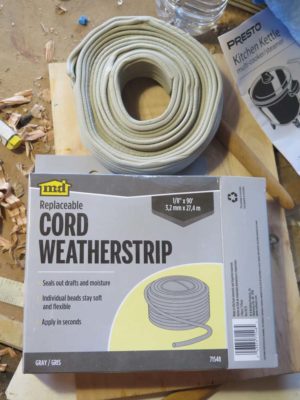More Improvements to Gelatin Molds For Plaster Casting I

Last month I brought together all the new information I had derived from the initial gelatin molds exercises to see if I could nail it on a more complex application. For this project I used a pattern derived from a cast pot-metal satyr’s head mount from a 19th century pastiche of a 17th century French desk. The hardware on the desk was cheezy and poorly finished (I was only interested in the desk itself as it was the earliest intact example of “mastic tortoiseshell”; another tale for another time). This was probably a poor choice for a pattern because its level of “finishing” made it difficult to ascertain the ultimate success of the new mold and casting.

Just before this endeavor I was doing some winterizing and had a bolt-of-lightening stroke of inspiration. As I was affixing the shroud around the window air conditioner with rope caulk I suddenly noticed the similarity of the rope caulk to the gaskets I made from modeling clay for my molding and casting. Could it work the same way, but without the time involved in making the the initial gaskets?
I could hardly wait to get back home to try it out.
Fabulous!


I built the form-fitted Lego casting dam for the pattern/mold and quickly laid in a bead of the rope caulk as the gasket on the inner edge of the underside, and pressed the assembly together. The adhesion and squeeze-out was basically perfect. Rope caulk is formulated to stick just enough to make it through the winter and then be peeled off with no residue in the spring. Cleaning off the squeeze-out required only a pass with a boxwood sculpting tool configured with a knife edge.
Suddenly I was in possession of a new technique to cut many minutes out of my pattern/casting dam set-up for the remainder of my working life.
It was now time to move forward with the modifications to the gelatin formulation and make the mold.



Join the Conversation!